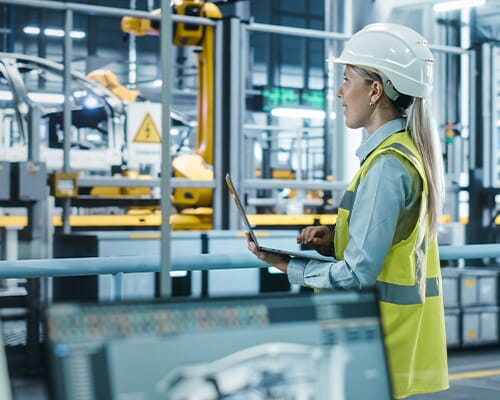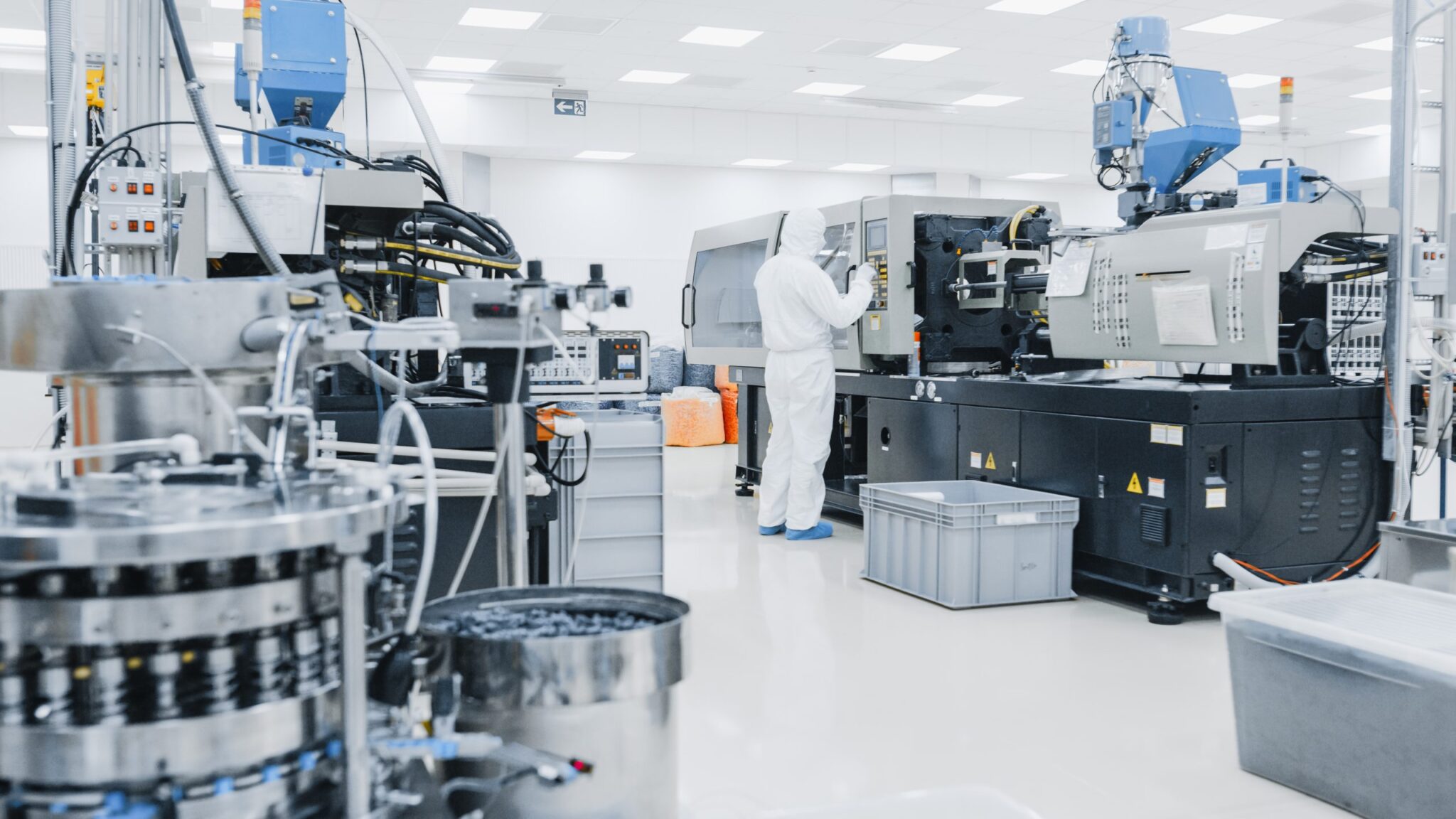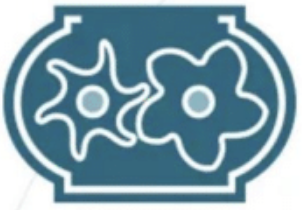
How Industrial Air Compressors Are Used in the Oil and Gas Industry
February 15, 2023
Quality is Job One in Automotive Air Compressors
March 8, 2023Positive Displacement Compressor: Key Info
Kaishan USA | February 22, 2023 | Uncategorized
A positive displacement compressor is the most common type of industrial air compressor in use today—and for good reason.
You’ll find them in a wide range of applications, from small dentists’ offices to huge automotive plants. From the corner auto repair shop to international airports.
For good reason: they’re versatile. They offer a wide capacity range and a similarly wide variation in price points. And, most importantly, they’re reliable. As a result, they provide the “fourth utility” (joining water, electricity and gas) that thousands of commercial and industrial firms have depended on for decades.
What Is a Positive Displacement Air Compressor?
Positive displacement compressors work by drawing air into a compression chamber and then reducing that chamber’s volume to increase pressure. This core principle underlies “what is positive displacement,” as the process involves trapping a fixed volume and compressing it.
Several important issues need to be addressed:
Duty Cycle
One of the most important considerations is the duty cycle. How many hours will the compressor need to operate?
Some compressors, such as reciprocating piston machines, run best at only 50% duty cycle (about 30 minutes per hour). Meanwhile, rotary screw compressors can handle 100% duty cycle, thanks to their built-in cooling systems. As a result, to properly size a recip unit, you need to consider a compressor with a larger horsepower rating to give the pump time to cool down.
Others, like rotary screw compressors, work best when working 100%. Their lubricating oil goes through a cooling circuit that allows screw compressors to regulate their temperature constantly. Therefore, they don’t have the heat build-up that limits the duty cycle of recip compressors, and they don't have to stop to cool down.
Air Quality Needed
Does your compressed air operate a mechanical tool? Or does it need high-quality air—with impurities as low as 2-3 ppm—for the food industry, medical applications, semiconductor fabrication or even automobile painting?

Semiconductor fabrication requires compressed air of extremely high quality.
Environment
Where will the positive displacement compressor be located? Outside? In a crowded equipment room? Or, ideally, in its own separate enclosure?
All these factors will shape your decision about which positive displacement compressor type is right for your application.
Positive Displacement Compressor Types
Which of the positive displacement compressor types is the best? As with many other things, the answer is, “it depends.”
Each of the different positive displacement air compressors described below offers some unique benefits.
Reciprocating Piston Compressors
A reciprocating piston compressor acts like an automobile engine, drawing air into a compression chamber as it moves in one direction, then compresses it when it reverses and moves in the opposite direction.

Reciprocating piston compressors can be energy efficient but are not always the best choice.
A recip can be the most energy-efficient of the different positive displacement compressor types. But it is not for every application. Recips come in two different configurations:
- Single-acting models have only one compression chamber and come in sizes from 3 to 15 HP. However, they can only handle a lower duty cycle—of 50% or less. If the compressor runs too long and gets too hot, it will incur significant damage and have a short life.
- Double-acting piston compressors have compression chambers on both sides of the piston and can get much larger, up to 1,000 HP. But while double chamber reciprocating compressors have water cooling that addresses the duty cycle issues, they are becoming less common because they are expensive, require reinforced foundations to handle vibration and need more extensive maintenance.
Scroll Compressors
A scroll compressor has two scrolls operating in tandem. One is fixed, remaining stationary while a second scroll rotates using a swing link. The air between the two scrolls is pushed to the center of the two scrolls, compressing it.

Scroll compressors are often used in niche applications like a dental office.
Scroll compressors are generally smaller, 5 HP or below. You’ll find them in unique applications and niche markets, like dentists’ offices, where the environment is climate-controlled, less than 85°F. Most are oil-free, though oil-flooded models are becoming available. Unfortunately, they require frequent rebuilds to maintain efficiency.
Rotary Vane Compressors
Vane compressors have vanes that slide in and out of a rotor to compress air that enters a cavity. They are more common at smaller sizes (50 HP and below) but can be manufactured at capacities of up to 275 HP. Oil-free vane compressors are appropriate for light-duty applications, while oil-lubricated models can withstand a higher duty cycle, achieving moderate full-load efficiency.

Oil-lubricated rotary vane compressors are capable of a higher duty cycle than oil-free models.
Rotary Screw Compressors
Most positive displacement air compressors are rotary screw air compressors, which range from 5 to 600 HP. As it sounds, rotary screw compressors have two rotors that rotate through a compression chamber and pressurize the air until it reaches the desired pressure.
Two-stage rotary screw compressors achieve higher levels of efficiency by dividing up the work into two steps, which produces more CFM per HP (more flow per motor horsepower).

Rotary screw compressors are the most commonly used positive displacement air compressors because of their ability to deliver clean air reliably.
They rely on an oil lubrication system to remove contaminants from the air, lubricate compressor components and reduce operating temperature. There’s also an air cooler as well as an oil separating system. Altogether, these systems enable rotary screw compressors to handle harsh environments.
By removing the heat of compression, the oil-cooling system allows rotary screws to operate at a much lower temperature. And thus, they can safely handle a 100% duty cycle.
Best of all, they deliver the highest-quality air, meeting the needs of a wide variety of food, semiconductor and painting applications.
They do have to be maintained, however. The oil separator cartridge must be replaced periodically, or it will reduce the pressure and/or allow oil carryover.
Deployment
How you meet your needs for compressed air determines the efficiency and reliability of your compressed air system.
It may seem counter-intuitive, but a multi-compressor system often is significantly more efficient and reliable than one large unit.
We often recommend that our customers adopt a multi-compressor approach, designating one compressor as a lead with a second as a trim unit to handle demands that occur on a sporadic basis (like occasional sandblasting or even a painting application). Then, add a third unit as a backup should one of the others fail.
The trim unit could be equipped with a variable speed drive to address variations in demand.
We suggest that the lead and backup designations be switched weekly to ensure both remain fully functional.
Warranties
There’s no better proof of the screw compressor’s longevity than the warranties manufacturers offer. While suppliers of other compressor types may claim their products have greater useful lives, the industry’s most attractive warranties come from screw compressor manufacturers.
Kaisan’s own screw compressors are backed by an industry-leading ten-year airend warranty on many of our products, including the KRSD single-stage direct drive compressor and a lifetime airend warranty on the KRSP single-stage and KRSP2 premium two-stage compressors.
Consulting Help
Kaishan is fortunate to work with a nationwide network of independent distributors, who can provide on-site help and consultation as needed in helping you find the right air compressor for your application. These factory-trained air compression experts have an investment in their local communities and can help you optimize your air compressor system to meet your needs.
Key Takeaways
- Positive displacement air compressors are the most common type of industrial air compressor used today.
- Most positive displacement air compressors are rotary screw air compressors.
- Rotary screw air compressors deliver the highest-quality air, meeting the needs of a wide variety of food, semiconductor and painting applications.
- Two-stage rotary screw compressors achieve higher levels of efficiency and are an even better choice for most applications.
- How you meet your needs for compressed air could well determine the efficiency and reliability of your compressed air system.
Let Us Help
Choosing the right positive displacement air compressor for your application can be challenging, especially if you have specialized or incredibly demanding requirements. If you need help finding the right air compressor for your application, get in touch with the experts at Kaishan. Contact us today.
Random stat or
customer quote
textXXtext
text
Random stat or
customer quote
textXXtext
text
Positive displacement air compressors are the most common type of industrial air compressor in use today.

